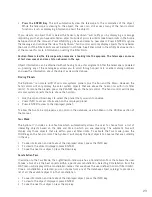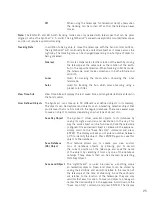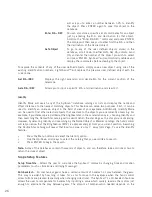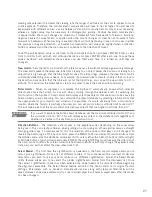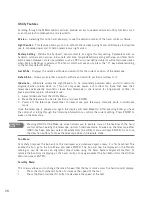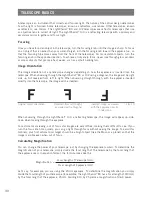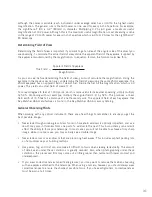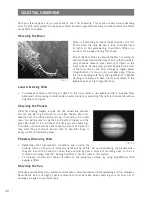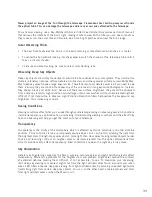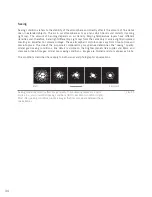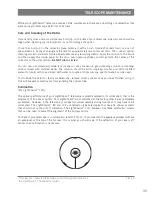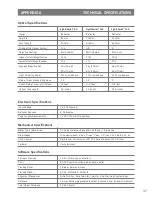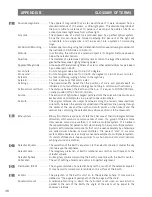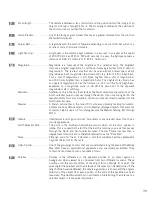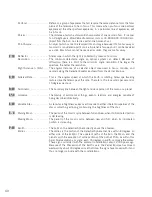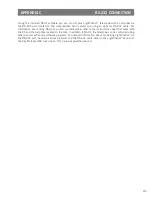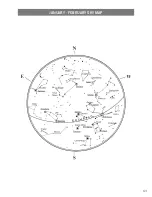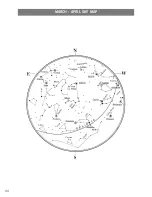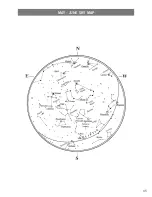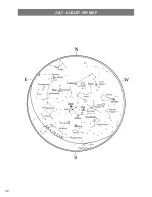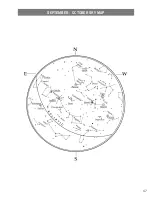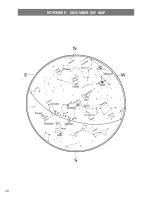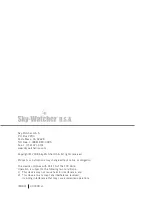
7
Design .
Refractor .
Refractor .
Reflector
Aperture .
80mm .
102mm .
10mm
Focal .Length .
900mm .
600mm .
650mm
F/ratio .of .the .Optical .System .
11. .
5.9 .
5
Objective .Coatings .
Multi-Coated .
Multi-Coated .
Aluminum
Highest .Useful .Magnification .
150x .
200x .
250x
Lowest .Useful .Magnification .
1x .
17x .
20x
Eyepiece .Magnification .
6x .(25mm) .
24x .(25mm) .
26x .(25mm)
.
90x .(10mm) .
60x .(10mm) .
65x .(10mm)
Light .Gathering .Power .
11x .unaided .eye .
212x .unaided .eye .
45x .unaided .eye
Field .of .View: .Standard .Eyepiece .
1.4º .
2.2º .
2º
Linear .Field .of .View .(at .1000 .yds) .
74 .feet .
115 .feet .
105 .feet .
Optical .Tube .Length .
5 .inches .
25 .inches .
24.5 .inches
APPENDIX A
TECHNICAL SPECIFICATIONS
Optical Specifications
Electronic Specifications
Mechanical Specifications
Software Specifications
Input .Voltage .
12 .V .DC .Nominal
Batteries .Required .
8 .AA .Alkaline
Power .Supply .Requirements .
12 .VDC-750 .mA .(Tip .positive)
Motor: .Type ./ .Resolution .
DC .Servo .motors .with .encoders, .both .axes ./ ..26 .arc .sec .
Slew .speeds .
Nine .slew .speeds: .4º/sec, .2º/sec, .1º/sec, .0.5º/sec, .2x, .16x, .8x, .4x, .2x .
Hand .Control .
Double .line, .16 .character .LCD, .19 .fiber .optic .backlit .LED .buttons
Fork .Arm .
Cast .aluminum
Software .Precision .
16 .bit, .20 .arc .sec. .calculations
Ports .
RS-22 .communication .port .on .hand .control
Tracking .Rates .
Sidereal, .Solar .and .Lunar .
Tracking .Modes .
Alt-Az, .EQ .North .& .EQ .South
Alignment .Procedures .
Astro-Tri-Align, .Auto .Two-Star, .Two-Star, .One-Star, .Solar .System .Align
Database .
25 .user .defined .programmable .object. .Enhanced .info. .on .over .100 .objects
Total .Object .Database .
4,0 .Objects .
LightChariot
™
80
LightChariot
™
102
LightChariot
™
130
Summary of Contents for LightChariot 102AR-AZ
Page 1: ...LightChariot INSTRUCTION MANUAL 8 0AR A Z 10 2 AR A Z 13 0 N A Z...
Page 2: ...w w w s k y w a t c h e r u s a c o m...
Page 42: ...42 APPENDIX D STANDARD TIME ZONES OF THE WORLD 26 APPENDIX A STANDARD TIME ZONES OF THE WORLD...
Page 43: ...43 JANUARY FEBRUARY SKY MAP...
Page 44: ...44 MARCH APRIL SKY MAP...
Page 45: ...45 MAY JUNE SKY MAP...
Page 46: ...46 JULY AUGUST SKY MAP...
Page 47: ...47 SEPTEMBER OCTOBER SKY MAP...
Page 48: ...48 NOVEMBER DECEMBER SKY MAP...
Page 49: ...49 NOTES...
Page 50: ...50 NOTES...

